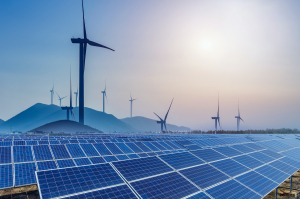UGM researchers develop wind turbine for Indonesia's 3T regions
A research team from the Department of Mechanical and Industrial Engineering at Gadjah Mada −University (UGM) has developed a new wind turbine, named "Antasena," to optimize new and renewable energy (EBT) utilization in Indonesia's remote and underdeveloped regions, commonly known as 3T areas (frontier, outermost, and underdeveloped regions).
The project is a collaborative effort between Professor Indarto, Professor Deendarlianto, Dr. Agung Bramantya, and PLN’s Research and Development Center.
“Antasena is designed to harness wind energy, supporting carbon utilization efforts specifically for 3T areas,” Deendarlianto said as quoted in a statement from Yogyakarta on Tuesday, October 29, 2024.
The turbine is distinguished by its ability to operate effectively at low wind speeds − around 2.5 meters per second − addressing a common challenge faced by wind power generation in Indonesia.
"This innovation with the Antasena turbine provides a solution to these wind limitations,” Deendarlianto noted, pointing to the potential impact on rural electrification efforts.
He further highlighted that the wind power generation initiative is part of PT PLN's renewable energy strategy, aiming to increase Indonesia's EBT mix to 23 percent by 2025, in line with the National Electricity Supply Business Plan (RUPTL) 2021-2030.
The project also aligns with PLN's objectives to enhance electricity supply in 3T regions.
"PLN will fully support the design, prototype, mass production, and installation of the Antasena turbine, ensuring it can be directly utilized by the communities there," Deendarlianto said.
The turbine is built with eco-friendly materials, using composite materials with carbon fillers derived from power plant waste.
Every stage of creating the Antasena turbine reflects the researchers' commitment to a greener, sustainable future for Indonesia, providing reliable power solutions for communities beyond the reach of conventional energy sources.
Tag
Already have an account? Sign In
-
Start reading
Freemium
-
Monthly Subscription
30% OFF$26.03
$37.19/MonthCancel anytime
This offer is open to all new subscribers!
Subscribe now -
Yearly Subscription
33% OFF$228.13
$340.5/YearCancel anytime
This offer is open to all new subscribers!
Subscribe now






